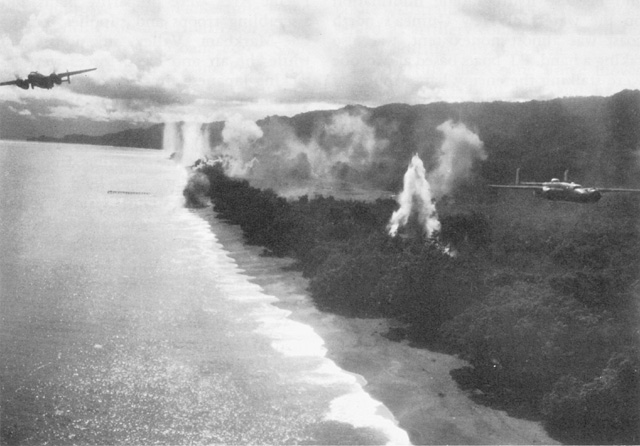What WWII Japanese Objective Prompted Allied Defense of New Guinea?
A DEEPER LOOK: PURSUED: TEN KNIGHTS ON THE BARROOM FLOOR (from the notes of Mel R. Jones and additional research)

Did Germany’s aggressive expansionist takeovers in Europe encourage Japan’s desire to capture and control areas with needed raw materials in the Pacific? If so, Japan would first have to take into account significant deterrent forces that could thwart their aggression.
Japan entered the Second World War when they attacked the United States Pacific Fleet in Pearl Harbor, Hawaii on December 7, 1941, and crippled it. This first step in establishing their “Greater East Asia Co-prosperity Sphere” was undertaken so they could seize Malaya, the Netherland East Indies, the Philippine Islands and an outer defensive perimeter of other islands.
Early Japanese successes exceeded expectations, and they thought a negotiated peace would ensue, but instead the Americans prepared counteroffensives.
Meanwhile, Japanese “victory disease” led to overconfidence, and they embarked on an even larger plan to expand their defensive perimeter to include seizing Australia as well as other islands to protect their “flanks.” New Guinea was among these islands.
Japanese attempts to conquer New Guinea by sea failed in the battles of the Coral Sea and Midway. So next, the Japanese tried the overland route. Landing on the northern coast of New Guinea, the Japanese Army established bases designed to support other offensives. U.S. Military commitment to the New Guinea Campaign came in support of the Australians in the defense of Port Moresby, New Guinea.
The Japanese 18th Army was directed to move to New Guinea from Rabaul in the Northern Solomons and establish headquarters at Lae on the northern coast of eastern New Guinea in March 1943. But the Allies cut Japanese communications, attacked supply lines and bases and stopped their reinforcement of advanced positions. So by early 1944, eastern New Guinea became a secondary holding front with the primary front now in western New Guinea.
The ten crew members of “Ten Knights on the Barroom Floor” B-24 bomber in Jones’s fictional tale were part of the Allied offensive against Japan’s invasion of New Guinea. Their ill-fated flight in December 1943 was part of a 23-bomber formation that left Port Moresby, New Guinea, flying northwest to their target of Boram Airfield in Wewak on the northern coast. A row of corrugated steel buildings along the northern edge of the base was believed to house aircraft and engine repair shops.
Their leader, Colonel Rogers, warned that the Wewak peninsula bristled with every aircraft defense imaginable, with enemy fighters which would outnumber Allied fighter escorts by a rate of five to one. Low cloud cover conditions almost guaranteed some bombers would get separated from the top cover fighters and the rest of the formation.
After dropping most of their bombs on enemy anti-aircraft emplacements protecting the airfield, our ten man crew’s bomber was hit by flak and number two engine caught fire, but the pilot and copilot soon had the wing up, propeller feathered, mixture throttle closed, and ignition, fuel and generator off.
At first they used their three good engines to keep them in a tight V formation at number five position, but soon they couldn’t keep up and lost sight of the formation in the poor visibility.
They remembered Colonel Rogers admonition the evening before. “Gentlemen, forget the myth about bomber crews, that ‘we work for Uncle Sam en route and over the target, but after bombs away, we’re unemployed.’ But stay employed! Get back here the best you can. God speed!”
What happened next to the crew in their partially disabled bomber is the stuff of countless tales in the New Guinea Campaign, both historically and fictionally in Pursued: Ten Knights on the Barroom Floor. Would these brave “knights” achieve their mission of helping to bring about peace through war and survive? Or would this paradox once again prove to be unsustainable for themselves and for the nations on earth as time rolls on?
Reference: Prefer, Nathan. MacArthur’s New Guinea Campaign. Conshohocken, PA: Combined, 1995. Print.
[avatar]Marian[/avatar]
